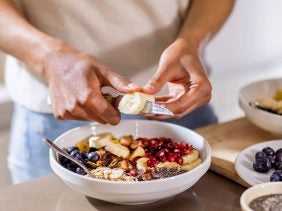Choosing the Right Sports Bra: 5 tips for perfect support
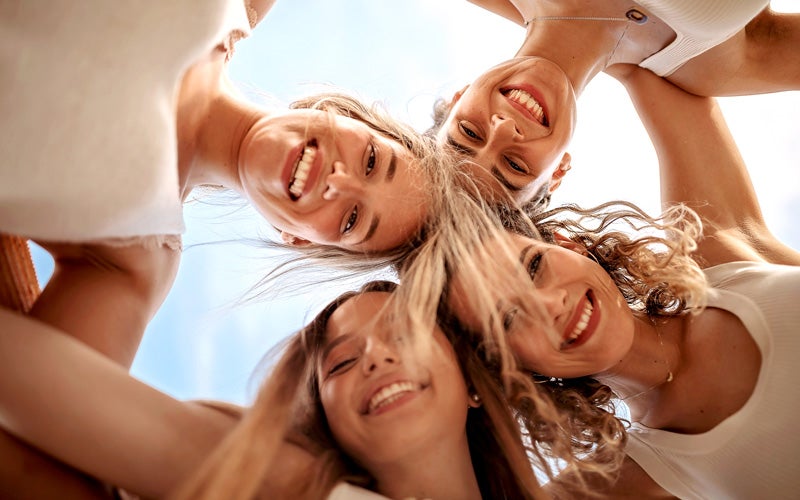 ©eclipse_images
©eclipse_images
An ill-fitting sports bra can ruin your whole workout. Learn about choosing the right sports bra for your workout and what to look out for when buying and maintaining one.
What are the benefits of a sports bra?
The bigger your bust size, the more you feel every physical impact – whether you’re jogging, doing yoga, or crushing those burpees. Those with smaller busts may be comfortable working out without extra support. But if you’re in larger cup sizes, even a low-impact walk can get uncomfortable without some bounce protection.
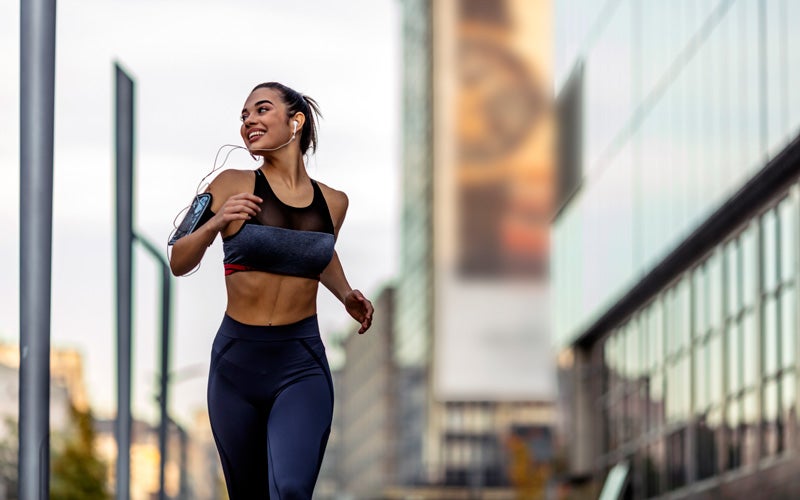
Breast tissue is made up of sensitive glands, soft fat, and connective tissue. Breasts bounce up and down with every movement, moving an average of nine centimeters per step. The harder the impact, the more they move.
A good sports bra can reduce breast movement by up to 70 percent. This is not only more comfortable for the wearer, but can also preserve the elasticity of the skin and tissue, which can prevent “sagging breasts” as well as back problems or bad posture. Plus, it can reduce the risk of chest pain during intensive workouts.
Advantages of sports bras
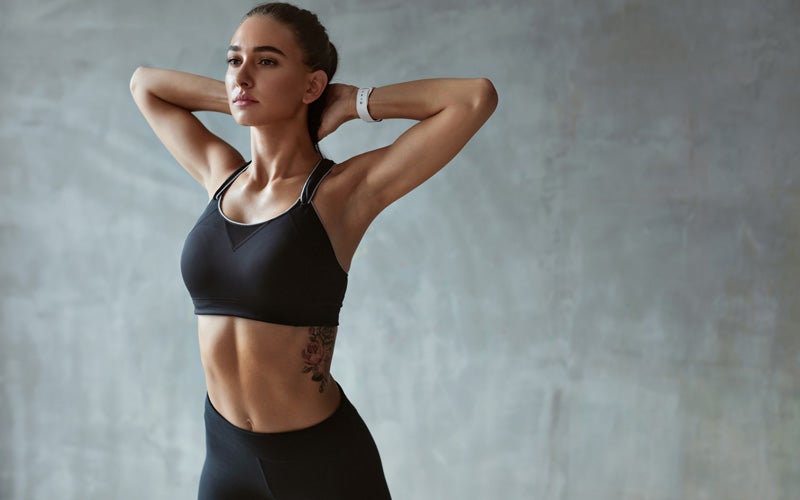
- A sports bra provides stability and support, even during high-impact exercise.
- Sports bras relieve and support the breasts, helping maintain the elasticity of the skin.
- Sports bras distribute the weight of the bust over a larger area, which can help keep you from changing to bad posture to compensate.
- A sports bra can prevent breast pain during exercise.
- They’re usually breathable and reliably absorb sweat.
What are the best sports bra features?
The optimal sports bra for you should be:
- Breathable: wicking sweat while repelling moisture from the outside.
- Comfortable: letting you focus on your workout, not your chest!
- Fitted like a second skin: no pinching, no puckering.
- Supportive: appropriate for the sport of your choice.
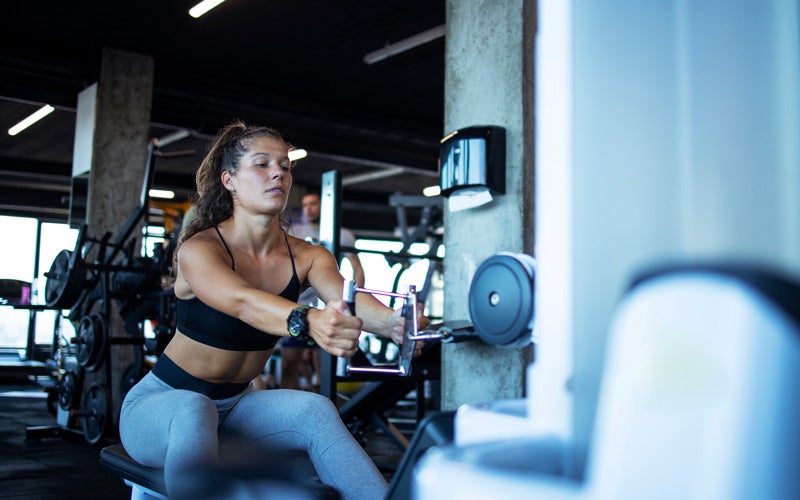
5 factors for choosing the right sports bra
From material to size to shape: Your perfect bra should tick all the boxes for your body. How do you know it’s the one?
1. Material
To ensure that you’ll get the most of your bra long-term, it should be tear-resistant, breathable, and comfortable. Pay attention to the fabric composition. Most sports bras are made of cotton, merino wool, elastane, polyester, and/or polyamide or nylon.
Depending on your skin, we most recommend a microfiber blend (for example: polyester, nylon and elastane). This mix combines the advantages of many materials.
Here’s a rundown on sports bra materials you’re most likely to see:
| Material | Advantages | Disadvantages |
| Cotton | – comfortable
– heat-insulating – sustainable | – holds onto moisture
– dries slowly |
| Merino Wool | – dries quickly
– odor-inhibiting – moisture-repellent – sustainable | – can be itchy |
| Elastane | – comfortable to wear
– stretchy – tearproof – breathable – heat-insulating | – can wear out quickly |
| Polyester and Polyamide | – moisture-repellent
– dries quickly – tearproof | – does not absorb sweat |
2. Size
Your bra should support you, not get in your way. A great fit can make or break your workout experience. What makes this so challenging? There are no standard sports bras sizes. They vary not only between manufacturers, but even between individual models.

Your best bet is to get help from a specialist. Looking online? Get your size by measuring your breast circumference (along your nipples) and underbust circumference (below your breasts) before you buy. Test the bra by jumping up and down a few times. You should feel supported and comfortable. Your preferred level of support may not be the same as someone else’s, so try a few options!
3. Fit
A good sports bra fits tightly, but does not pinch or squeeze. Keep it on for a few minutes in the fitting room and try bouncing up and down a few times. If the bra leaves red marks on your skin after taking it off, it’s not the bra for you.
Tip: Don’t buy a bra during your period, if you can avoid it. Period hormones can make your breasts sensitive, not to mention larger. You won’t be doing all your workouts in this phase of your cycle, so don’t run the risk of buying a size that’ll be too big most of the time.
4. Support

Sports bras can reduce breast movement by up to 70% by providing the right support for your cup size and your sport’s impact level.
| Support | Cup Size | Sport |
| Low (Low impact) | B or smaller | Yoga, Pilates |
| Medium (Medium impact) | C or smaller | Functional training, biking, walking |
| Strong (High impact) | C or bigger | Crossfit, jogging, martial arts |
5. Closure and straps
The closure and straps also have an influence on how your bra fits. Manufacturers offer straight straps, crossed straps, and racerback, as well with or without a clasp on the bottom band.
Classic compression bras usually have straight straps and suit any cup size. The bigger your breasts, the wider your straps should be. This will better distribute their weight and avoid pressure points on your shoulders.
Crossed straps look nice but offer less support. They are suitable for smaller breasts.
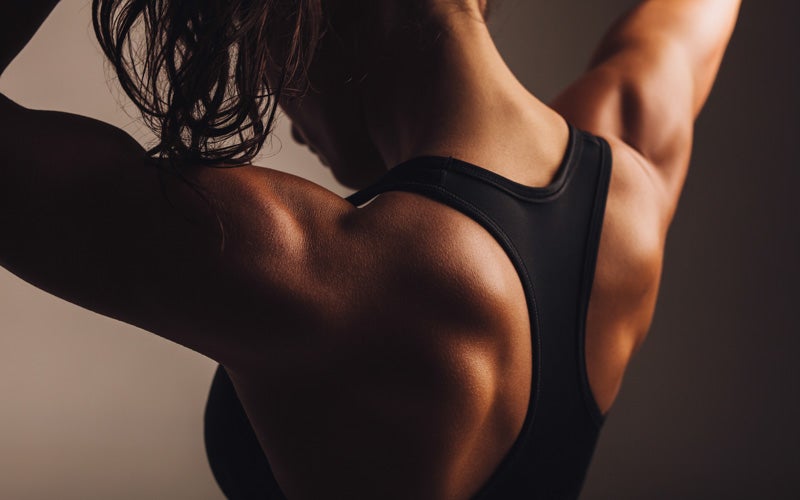
Racerback sports bras have wide straps that meet behind the shoulders. These sports bras give extra support – ideal for larger breasts and high-impact sports.
When and how to wash your sports bra
You should wash your sports bra after each workout or every other workout, and air it out well in the meantime. Don’t just drop it into your gym bag!
Most synthetic fibers are sensitive to higher temperatures. To lengthen your bra’s lifespan, we recommend hand washing at a maximum of 30-40 degrees. Double-check the label on your own bra to confirm, though.
Don’t use fabric softeners or chlorine-based detergents. After washing, hang your bra up to air-dry.
With the right care, a high-quality sports bra used regularly can last at least a year.
Summary
- A sports bra supports your breasts while working out.
- Sports bras are comfortable, support your breasts, prevent pain during exercise, and maintain the elasticity of your breast tissue.
- A good sports bra is breathable, fits like a second skin, and offers optimal comfort. Styles and support differ based on whether your workout is high-impact or low-impact and your cup size.
- Look for a mix of synthetic fibers like nylon, elastane, and/or polyester.
- For large breasts, try racerback bras with high support.
- For medium-sized breasts, try bras with straight straps or a racerback and medium support.
- For small breasts, light-support bras with crossed or straight straps are often enough.
- Try out a variety of sports bras and styles to find your ideal bra.
Sources for this article
We at foodspring use only high-quality sources, including peer-reviewed studies, to support the facts within our articles. Read our editorial policy to learn more about how we fact-check and keep our content accurate, reliable, and trustworthy.



























